- How we help you
Back
- Owner drivers
Back
- All benefits
- Calculate earnings
- Find loads & return journeys
- Leave multidrop
- Expand your network
- Manage finances
- Courier companies
Back- All benefits
- Calculate earnings
- Find loads & return journeys
- Reduce dead miles
- See average courier rates
- Find subbies
- Manage your fleet
- Shippers
Choosing the right courier van for your business
Understand the different courier van wheelbase sizes, the payloads you can take, and the advantages for your courier business.
Dan Solomon — Updated

Choosing a new courier van is a big decision for any courier.
With so many options available, it can be tough to find the right fit.
The van you choose will determine what jobs you can take on, and will impact your efficiency, costs, and customer satisfaction. That’s why it’s essential to make an informed choice.
In this guide, we’ll help you understand the different van sizes and features, and give you some examples. So you can find the perfect van for the long-term success of your courier business.
Get access to 13,000+ courier loads a day on Courier Exchange
Sign up
Be your own boss. Set your own hours. Make your own money.What we’ll cover
Short Wheelbase (SWB) Vans
Short wheelbase vans are perfect for city deliveries. They are easy to drive and park, even in tight spaces. These vans are ideal for couriers who mostly work in urban areas.
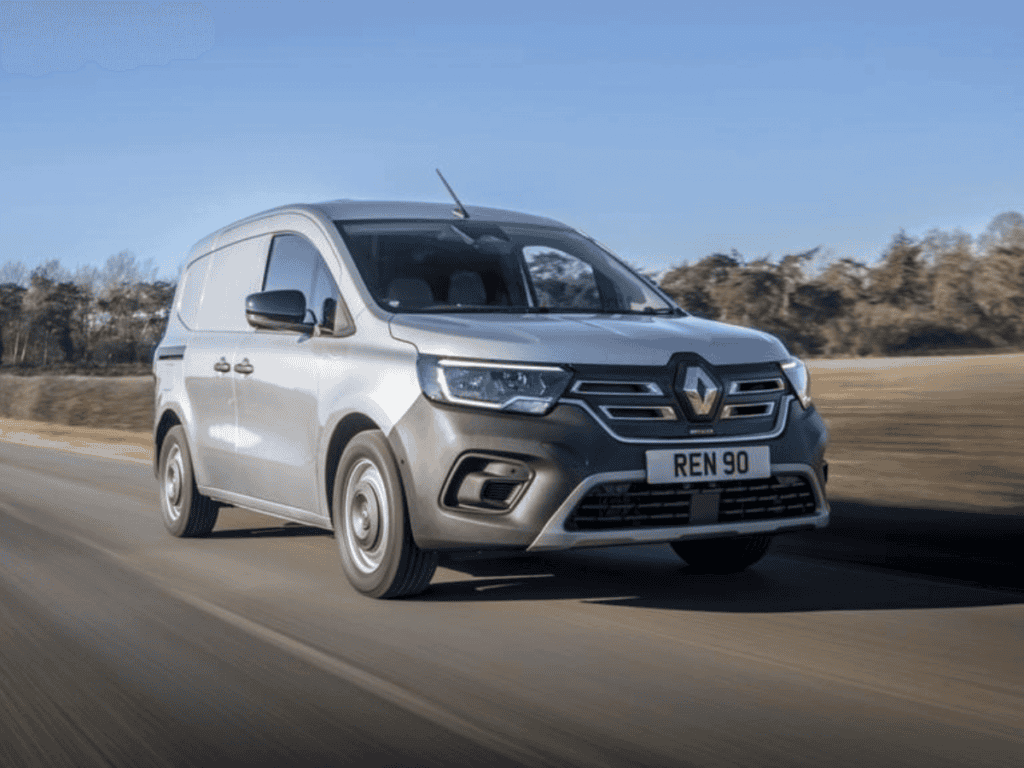
Renault Kangoo courier van
The Renault Kangoo is a reliable small van for couriers. It’s great for carrying light loads, as well as navigating London and other busy city streets.
- Load Area Dimensions: Length: 1,806mm, Width: 1,570mm, Height: 1,215mm
- Maximum Payload: 836-937kg
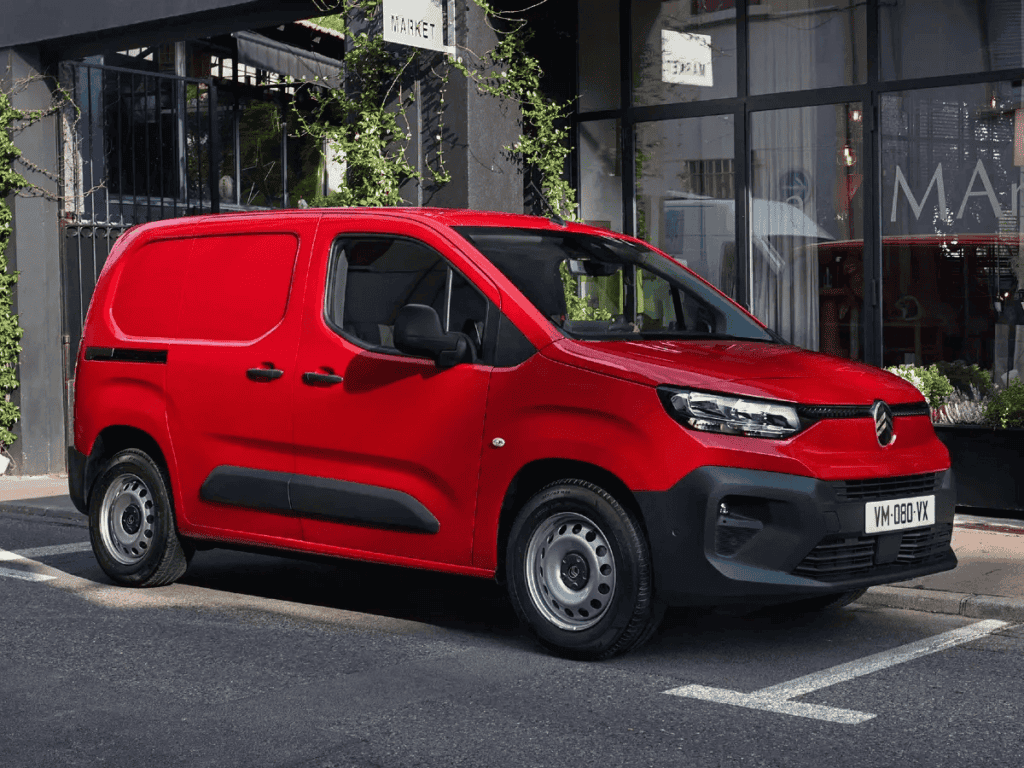
Citroën Berlingo
The Citroën Berlingo is another excellent choice for a small courier van. It offers a bit more space while still being compact.
- Load Area Dimensions: Length: 1,817mm, Width: 1,550mm, Height: 1,236mm
- Maximum Payload: 840-1059kg
Short wheelbase vans are ideal for busy locations for couriers, like London and Birmingham. Their small size makes them easy to handle and park, and they are efficient for quick deliveries.
Medium Wheelbase (MWB) Vans
Medium wheelbase courier vans strike a balance between size and manoeuvrability. They are suitable for a variety of delivery needs and are popular among many couriers.
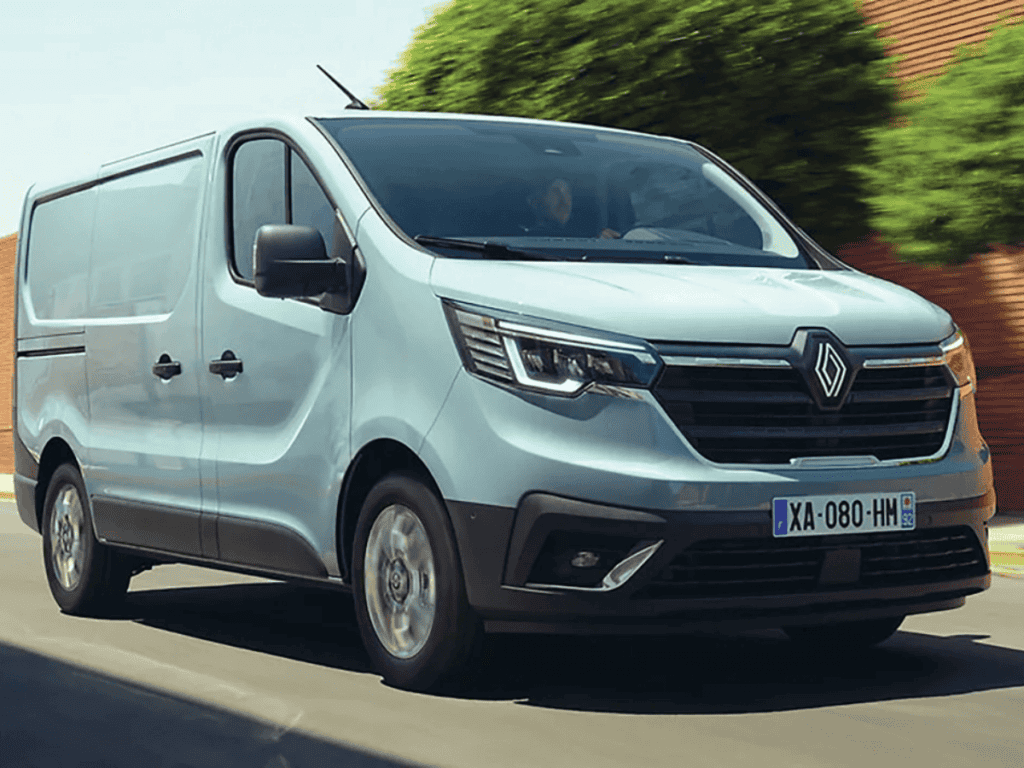
Renault Trafic courier van
The Renault Trafic is a versatile van for couriers. It offers more space without being too large to handle.
- Load Area Dimensions: Length: 2,537mm, Width: 1,662mm, Height: 1,387mm
- Maximum Payload: 1,122-1,266kg
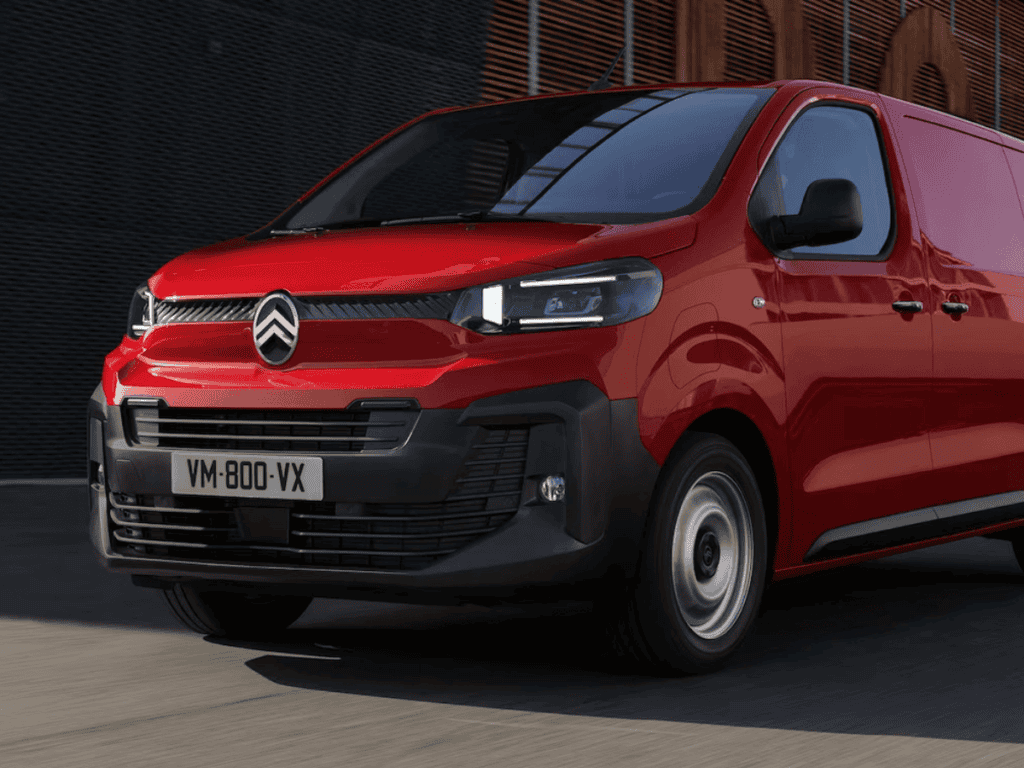
Citroën Dispatch
The Citroën Dispatch is another good option for medium wheelbase vans. It provides ample load space and is easy to drive.
- Load Area Dimensions: Length: 2,510mm, Width: 1,628mm, Height: 1,397mm
- Maximum Payload: 1,200-1,400kg
Medium wheelbase vans are popular for courier work because they offer a good mix of space and flexibility. They are perfect for couriers who need to carry a bit more without the bulk of a large van.
Long Wheelbase (LWB) Courier Vans
Long wheelbase vans are perfect for larger loads and longer distances. They are ideal for couriers who need more space and can handle driving a bigger vehicle.

Renault Master courier van
The Renault Master is a robust courier van. It’s great for heavy and bulky loads.
- Load Area Dimensions: Length: 3,083mm, Width: 1.765mm, Height: 1,894mm
- Maximum Payload: 1,200-1,971kg
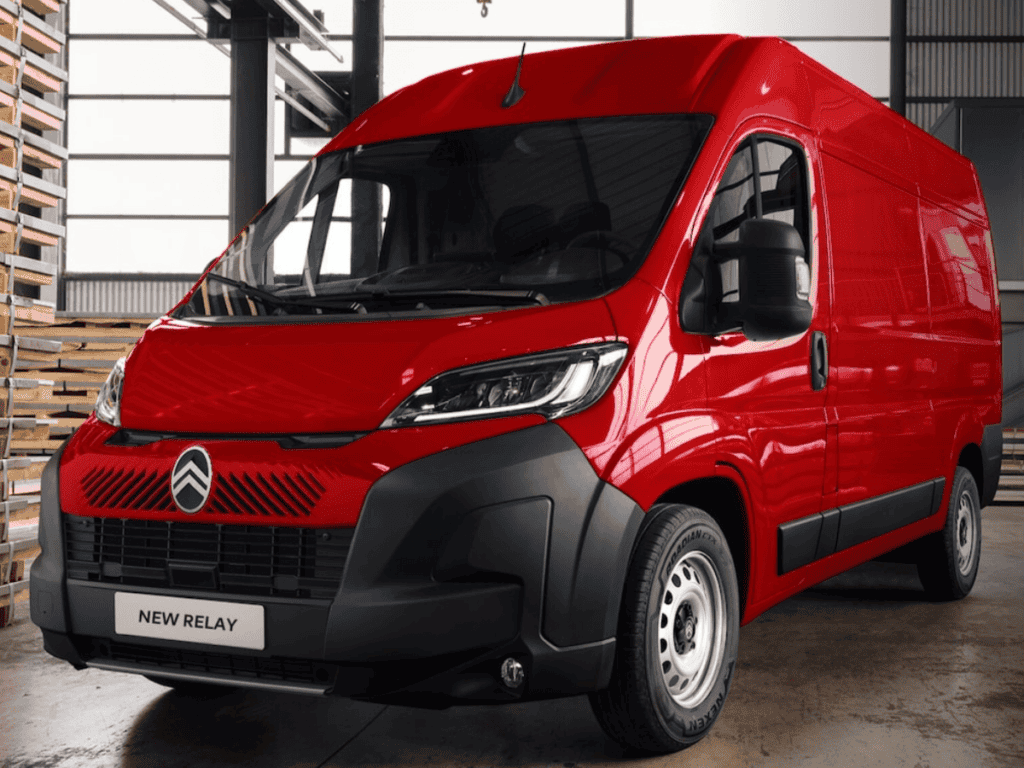
Citroën Relay
The Citroën Relay offers a lot of space and is perfect for long-distance courier work.
- Load Area Dimensions: Length: 3,120mm, Width: 1,870mm, Height: 1,662mm
- Maximum Payload: 1,150-2,000kg
Long wheelbase vans are the best choice for couriers who need to transport large items over long distances. They provide plenty of space and a higher payload capacity.
Extra Long Wheelbase (XLWB) Courier Vans
Extra long wheelbase vans offer the maximum cargo space. They are best for very long distances and large loads.
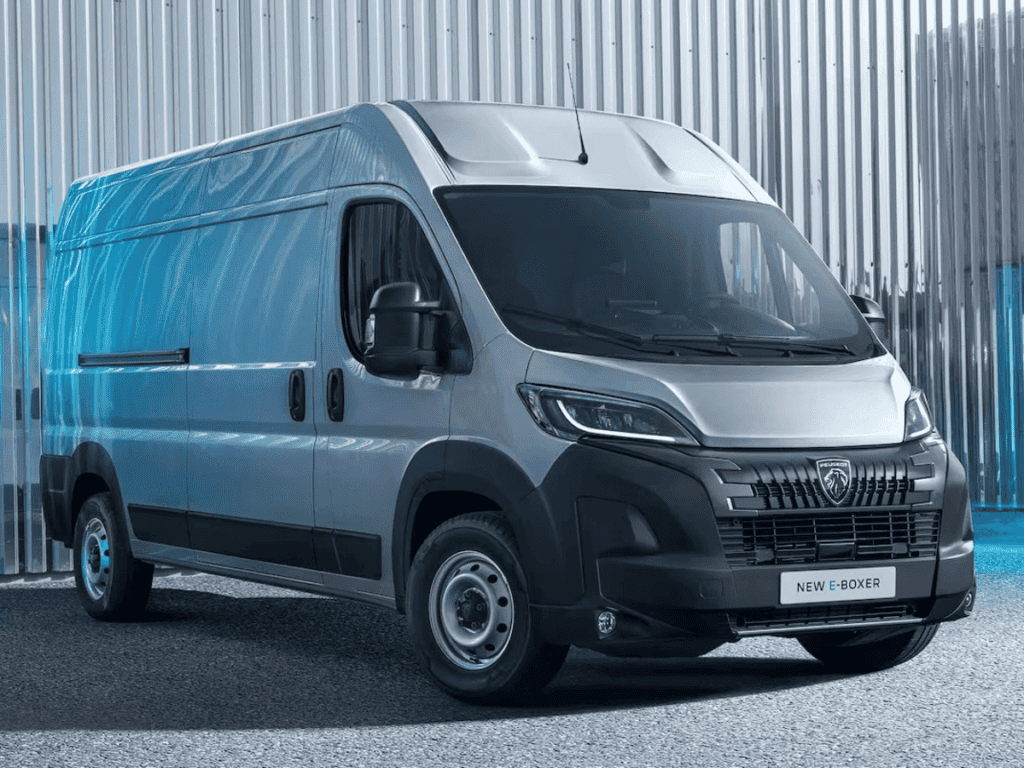
Peugeot Boxer
The Peugeot Boxer is a large van for couriers, offering plenty of space for big loads.
- Load Area Dimensions: Length: 4,070mm, Width: 1,870mm, Height: 3,920mm
- Maximum Payload: 1,340-1,900kg
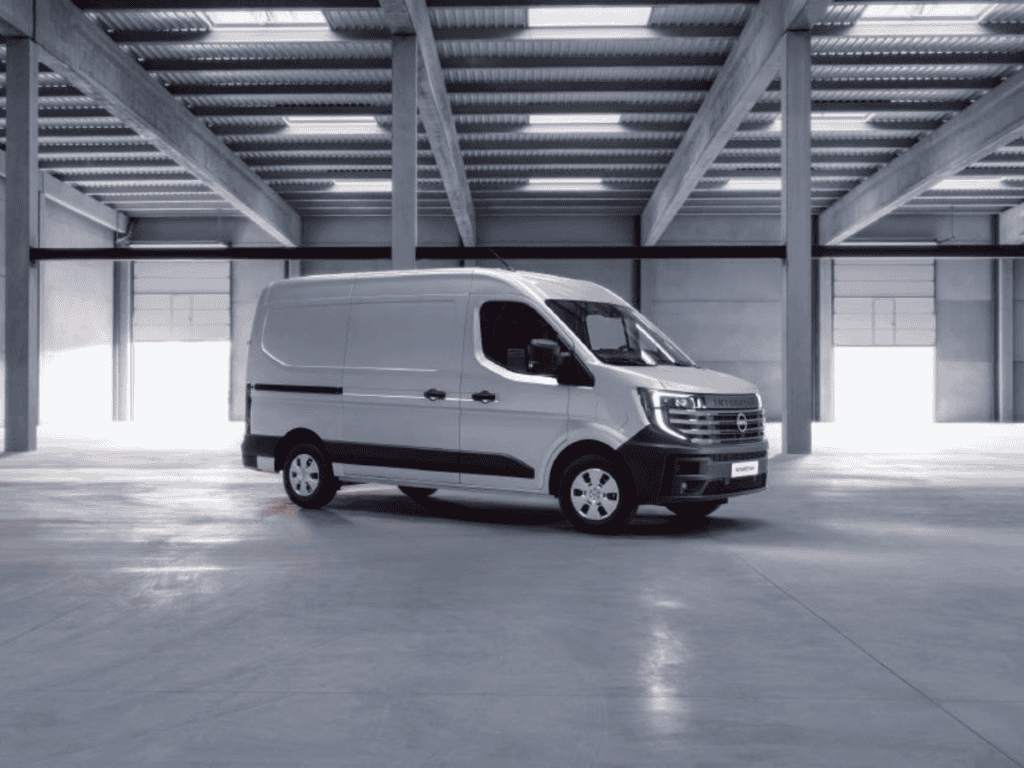
Nissan Interstar
The Nissan Interstar is a strong contender in the extra long wheelbase category. It’s ideal for heavy and bulky items.
- Load Area Dimensions: Length: 3214mm, Width: 1764mm, Height: 1912mm
- Maximum Payload: 1,413-1,606kg
Extra long wheelbase vans are perfect for couriers who need to transport very large items. Their spacious design and high payload capacity make them ideal for long-distance courier work.
Luton Vans
Luton vans are ideal for handling heavy and bulky items. They have a box-shaped cargo area that provides maximum storage space and often include a tail-lift for easy loading and unloading.
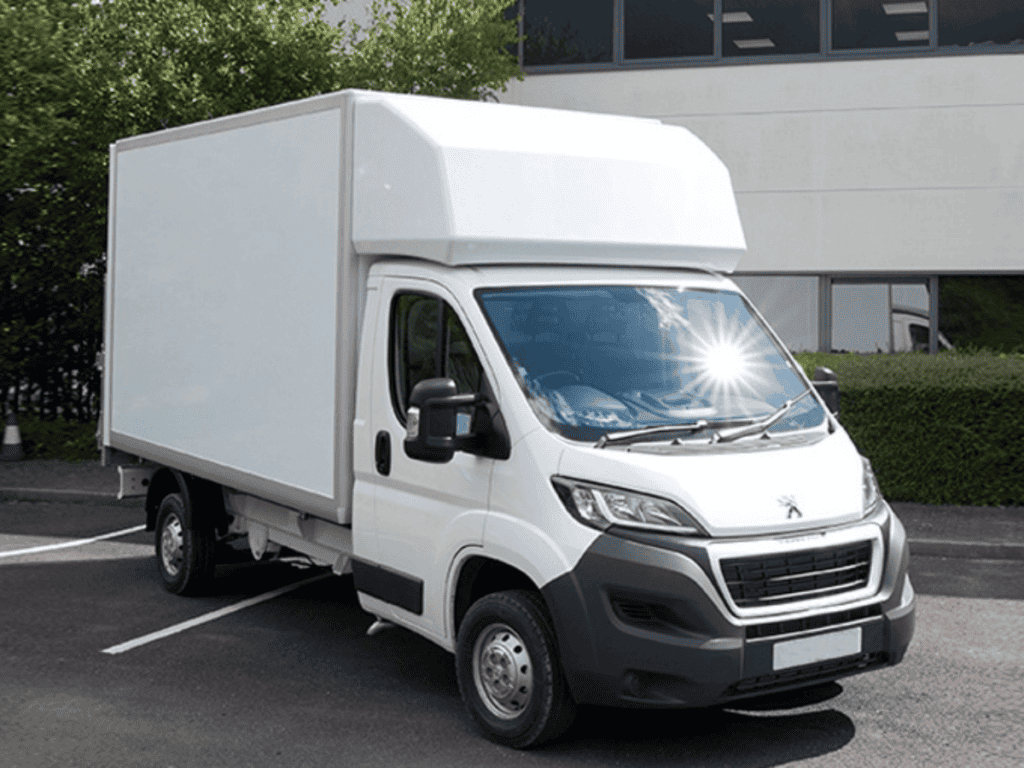
Peugeot Boxer Luton
The Peugeot Boxer Luton stands out for its robust build and reliability, making it perfect for transporting large and heavy loads.
- Load Area Dimensions: Length: 4,150mm, Width: 2,057mm, Height: 2,235mm
- Maximum Payload: 979-1,147kg
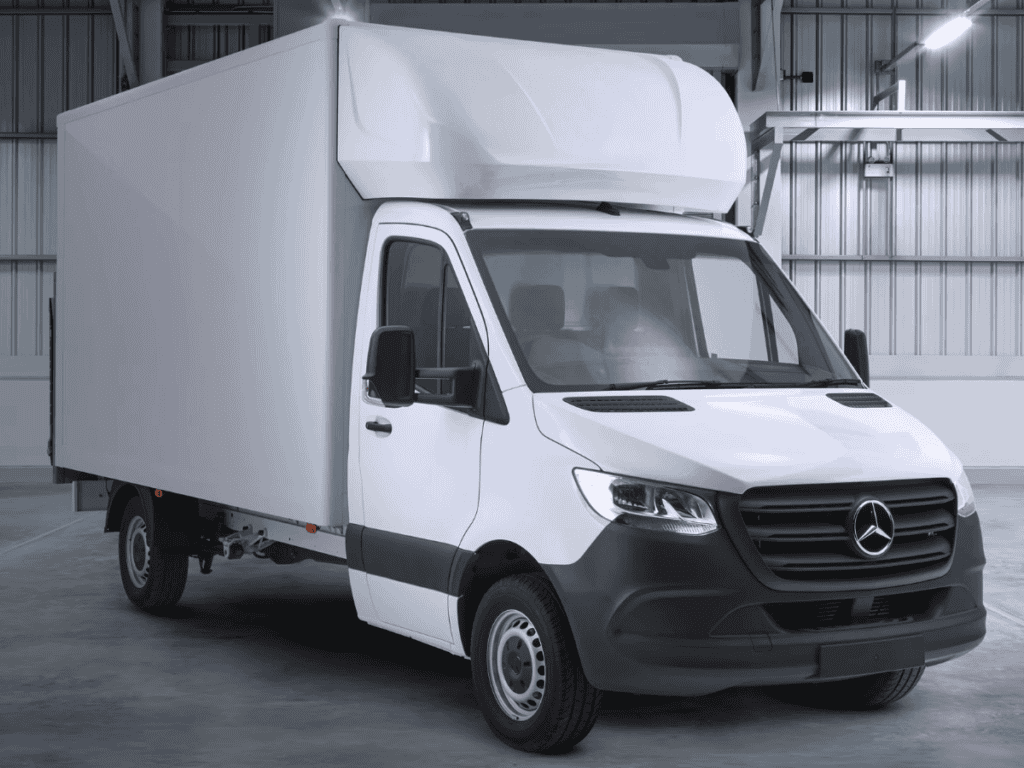
Mercedes-Benz Sprinter Luton
The Mercedes-Benz Sprinter Luton offers advanced safety features and a spacious cargo area, with a tail-lift that simplifies the handling of bulky items.
- Load Area Dimensions: Length: 4,080mm, Width: 2,025mm, Height: 2,235mm
- Maximum Payload: 754kg
Luton vans are perfect for couriers who need to transport large items. Their spacious cargo areas and included tail-lifts make loading and unloading easier. These vans provide a higher payload capacity, making them ideal for couriers dealing with bulky items regularly.
Conclusion
Choosing the right courier van for your courier business depends on your specific needs. For city deliveries, short wheelbase vans like the Renault Kangoo are perfect. Medium wheelbase vans such as the Renault Trafic offer a good balance of size and flexibility.
For larger loads, long wheelbase vans like the Renault Master are ideal. And for maximum cargo space, extra long wheelbase vans like the Peugeot Boxer are the best choice. Luton vans with tail-lifts offer additional benefits for handling heavy and bulky items, making them an excellent choice for couriers dealing with large packages.
If you want to find out how much you can earn in your area with each specific type of van, check out our earnings calculator.
Once you’ve decided on your ideal van, check out our guide for making sure you have the correct courier insurance.
Grow your business with Courier Exchange
Get access to 13,000+ loads a day, build your client list, and manage your finances.
Sign upThe courier industry in the UK is bigger than ever, offering many opportunities for owner-drivers and people who are new to the industry. Choosing the right location to operate in can make a big difference to your business. Some areas have more demand for couriers, better transport links, and more opportunities.
In this guide, we’ll explore the best locations for couriers and jobs in the UK, from the Midlands to the North, the South East, the South West, and London.
Get access to 13,000+ courier loads a day on Courier Exchange
Sign up
Be your own boss. Set your own hours. Make your own money.Locations we’ll cover

1. Birmingham
663 loads posted on CX per day (2024 daily average)
Birmingham is the UK’s second-largest city, with over 1.1 million residents. Known for its industrial history, the city is now a centre for business, retail, and manufacturing. It’s also home to the famous Bullring shopping centre and the NEC, one of the UK’s largest event venues.
Easily the best location for couriers
Birmingham’s central location provides excellent transport links. It’s well-connected by major motorways, including the M6, M5 and M42, making it easy to reach other parts of the UK.
Birmingham also has several large distribution centres and logistics hubs and sits with the so-called ‘golden triangle‘ of logistics centres. The high demand and good infrastructure in and around Birmingham make it a top location for courier work.

2. London
539 loads posted on CX per day (2024 daily average)
London, the UK’s capital, is home to nearly 9 million people. It’s one of the world’s most important financial and cultural centres, attracting millions of visitors and businesses. With its landmarks, shopping districts, and busy commercial areas, London is always on the move.
Why it’s one of the best locations for couriers
London has an extensive public transport and road network, making it easy to navigate. The city is home to major financial institutions and corporate headquarters, as well as many small and medium-sized enterprises (SMEs) that require regular deliveries.
The variety of businesses and the sheer volume of work available make London one of the best locations for couriers.

3. Nottingham
457 loads posted on CX per day (2024 daily average)
Nottingham, known for its links to Robin Hood, has a population of over 330,000.
It’s a vibrant city with two major universities and a strong economy based on retail, manufacturing, and services. The city centre is a hub of activity, with thriving markets and shopping areas.
Why Nottingham is a hotspot for couriers
Nottingham sits at the heart of the Midlands, making it a strategic location for deliveries.
It’s well connected by the M1 motorway, and its industrial estates create steady demand for courier services. E-commerce and retail businesses also drive frequent same-day deliveries.

4. Leicester
452 loads posted on CX per day (2024 daily average)
Leicester is one of the oldest cities in England, with a rich history dating back to Roman times.
Today, it’s home to around 360,000 people and is known for its textile industry, vibrant multicultural community, and strong sporting culture, including Leicester City FC.
Why Leicester is a top location for couriers
Leicester has a strong manufacturing and distribution sector, with many warehouses and industrial estates.
It’s located near the M1 and M69, providing easy access to major UK cities. The city’s thriving retail sector also creates high demand for courier services.

5. Coventry
394 loads posted on CX per day (2024 daily average)
Coventry, famous for its role in the UK’s car industry, has a population of around 350,000.
It’s also home to Coventry University and a growing tech sector, and is known for its rich cultural heritage. In fact, it was named the UK City of Culture in 2021.
Why Coventry is a busy city for couriers
Located near Birmingham and close to the M6, M69, and A45, Coventry is a key hub for logistics.
Many large businesses, including automotive and tech companies, require regular courier services. The city’s strong e-commerce sector also adds to delivery demand.

6. Manchester
383 loads posted on CX per day (2024 daily average)
Manchester is a major UK city with over 550,000 residents and a history rooted in industry and music. It’s known for its universities, football teams, and thriving nightlife. The city is also a major financial and business centre in the North of England.
Why it’s a prime location for couriers
Manchester has strong infrastructure, with extensive road and rail networks. The nearby Manchester Airport enables international freight, which increases the amount of courier driver jobs available. The city’s active economy and the large number of businesses create a constant demand for couriers.
If you’re looking for a bustling city with plenty of work opportunities, Manchester one of the top locations for courier work.


7. Sheffield
366 loads posted on CX per day (2024 daily average)
Sheffield, known as the Steel City, has a population of around 550,000. It has transformed from an industrial powerhouse into a modern city with strong healthcare, education, and retail sectors. Sheffield also has a large student population, adding to its lively atmosphere.
Why Sheffield is a hotspot for courier work
Sheffield’s location near the M1 makes it a key city for logistics. Many businesses in the area rely on couriers for manufacturing and retail deliveries.
The city’s growing e-commerce sector also boosts demand for fast and reliable courier services.

8. Northampton
363 loads posted on CX per day (2024 daily average)
Northampton, located in the East Midlands, is known for its historic shoe-making industry. With a population of around 230,000, it has a strong economy based on logistics, retail, and manufacturing. The town’s central location makes it a key business centre.
Why Northampton is a busy location for couriers
Northampton sits along the M1, providing fast transport links to London, Birmingham, and beyond. The town is a major hub for warehouses and distribution centres, creating steady work for couriers. Many national retailers and e-commerce companies operate from the area.

9. Derby
334 loads posted on CX per day (2024 daily average)
Derby, with a population of around 260,000, is known for its engineering and railway history. It’s home to Rolls-Royce, one of the world’s leading aerospace companies, as well as major rail and automotive firms. The city has a strong industrial and business presence.
Why Derby is an excellent location for couriers
Derby’s strong industrial base means a high demand for courier services, especially in engineering and manufacturing. The A38 and M1 provide key transport links, making deliveries across the region quick and efficient. The city’s businesses require regular logistics support.

10. Warrington
332 loads posted on CX per day (2024 daily average)
Warrington, a town in Cheshire, has a population of around 210,000. It has grown into a major business hub, with strong retail, technology, and logistics sectors. Its strategic location between Liverpool and Manchester makes it a key centre for trade and transport.
Why Warrington is a hotspot for couriers
Warrington is a major distribution centre, with many national and international companies operating warehouses in the area. It sits near the M6, M62, and M56, providing excellent road connections. This makes it a key location for couriers handling same-day and next-day deliveries.
The best locations for couriers in 2025 that works for you
All of these cities share several key features:
- They have excellent transport infrastructure, making it easy to navigate and reach different parts of the country.
- They also have high demand for courier services from diverse industries, ensuring a constant stream of work.
- Their central or strategic locations and the presence of major business hubs and distribution centres further enhance their appeal.
By choosing to operate in one of these prime locations, you can maximise your opportunities and grow your courier business.
If you want to find out how much you could earn with your vehicle type in your area, check out our potential earnings calculator.
Get access to 13,000+ daily loads on Courier Exchange
Be your own boss. Set your own hours. Make your own money.
Sign upStarting your own courier business can be a rewarding venture. As an owner-driver, you’ll have the freedom to be your own boss, set your own hours, and control your earnings.
But before you get on the road, you need a solid business plan. In this guide, we’ll show you how to create a business plan for a courier company that gets results and shows that you’re serious.
Get access to 13,000+ courier loads a day on Courier Exchange
Sign up
Be your own boss. Set your own hours. Make your own money.What we’ll cover
What is a business plan?
A business plan is a document that outlines your business goals and the strategy to achieve them. It provides a roadmap for your business, detailing everything from your services to your marketing strategies and financial projections.
A well-crafted business plan is essential for guiding your operations and securing funding from investors or lenders.
Why you need a business plan
A business plan is not just a formality; it’s a key tool for your success. Here’s why:
- Clarifies objectives: A business plan for a courier company helps you clearly define your business objectives and the steps needed to achieve them.
- Attracts investors: Investors and lenders often require a business plan to understand your business model and its profitability.
- Guides growth: It provides a clear path for business growth and development.
- Tracks progress: With a business plan, you can regularly check if you’re meeting your targets and make adjustments as needed.
- Identifies challenges: By planning ahead, you can foresee potential challenges and develop strategies to overcome them.
- Enhances credibility: A well-thought-out plan makes your business appear more professional and trustworthy to stakeholders.
Structure of a business plan for a courier company
A courier company business plan typically includes several key sections. Here’s a detailed look at what to include in each part:
1. Executive Summary
The executive summary is a brief overview of your business. It should include:
- Business Outline: A short description of your courier business.
- Mission Statement: What your business aims to achieve.
- Services Offered: A summary of the services you will provide.
The executive summary should be concise and engaging, capturing the essence of your business.
2. Business Description
In this section of your courier business plan, provide a detailed description of your business. Include:
- Business Name and Location: The name of your business and where it is based.
- Business Structure: Whether you’re a sole trader or a limited company.
3. Market Analysis
Conduct thorough research on the courier industry and your target market. This section should cover:
- Industry Overview: Current trends and the future outlook of the courier industry.
- Target Market: Identify who your customers are and consider whether you could serve a certain niche in the market (e.g. eco-friendly or refrigerated delivery).
- Competitors: Analyse your competition and identify what sets your business apart.
4. Organisation and Management
Describe how your business is structured and who is involved. Include:
- Business Structure: The legal structure of your business (e.g., sole trader, partnership, limited company).
- Management Team: Information about the owner and any other key team members, outlining their roles and responsibilities.
5. Services Provided
Detail the services your courier company will offer. Include:
- Services Description: Detailed descriptions of your courier services. For example, you might provide specialist courier services like 24-Hour, Dangerous Goods, or Frozen Transport.
- Benefits to Customers: Explain how your services will benefit your customers.
- Pricing Strategy: Outline how you’ll price your courier jobs, including how you will determine your rates (e.g., Price Per Mile).
6. Marketing and Sales Strategy
Explain how you plan to attract and retain customers. This section of the courier business plan should include:
- Marketing Plan: The channels and techniques you will use to reach your target market (e.g., online advertising, partnerships with local businesses).
- Sales Strategy: How you will sell your services and generate revenue, including key messaging, sales tactics and so on.
7. Funding Request
If you need funding, detail your financial needs here. You might be able to get funding in the form of a loan from a bank or even family/friends.
Also, consider whether you might be eligible for a government small business grant. This section should include:
- Amount Needed: The total amount of funding you require.
- Purpose of Funds: Explain how you will use the funds (e.g., purchasing a van, subscription fees to courier platforms, marketing expenses).
- Future Financial Plans: Outline how you plan to achieve financial stability and growth.
8. Financial Projections
Provide realistic financial forecasts. Include:
- Revenue Projections: Estimate your expected revenue over the next few years.
- Profit and Loss Statements: Projected income and expenses.
- Cash Flow Projections: Expected cash inflows and outflows.
9. Appendix
Include any additional documents that you think will support your business plan. This could be:
- Licences and Permits: Copies of any relevant licences, certifications and permits.
- CVs/Resumes: Background information on the owner and key team members.
Conclusion
Writing a business plan for a courier company may seem daunting, but it’s an important step in setting up your courier business. It helps clarify your vision, persuades investors, and provides a roadmap for success.
By following this guide, you can create a comprehensive courier business plan that will help you become a successful owner-driver.
Once your business plan is ready, make sure you get the right courier insurance!
Remember, the Courier Exchange is here to support new courier businesses with resources and opportunities to help you grow.
Grow your business with Courier Exchange
Get access to 13,000+ loads a day, build your client list, and manage your finances.
Sign upStarting your own courier business is an exciting opportunity. It gives you independence, flexibility, and the chance to grow something that’s all yours. But getting it right isn’t always easy. A few common mistakes can make life harder than it needs to be.
Whether you’re launching as a sole trader or setting up a limited company, knowing what to avoid can help you save time, money, and stress.
Let’s look at the mistakes new couriers make and how to get off to a great start.
What we’ll cover
Skipping market research
Jumping straight into the courier business without understanding the market is a big risk. It’s tempting to dive into work and hope for the best, but knowing your area and customer needs makes all the difference.
Start by asking yourself: who are your competitors? Are there any services they don’t provide that you could offer? What kinds of courier jobs are in demand locally?
For example, you might find that same-day delivery or specialised services, like handling fragile goods, are lacking in your area. Identifying these gaps helps you tailor your services and attract the right customers.
Choosing the wrong insurance
Nobody likes thinking about insurance, but it’s one of the most important things to get right. Without the right cover, a single accident could cost you thousands and put your courier business at risk.
You’ll need comprehensive courier insurance that includes:
- Vehicle cover: Protects your van or car from accidents or damage.
- Goods in transit: Covers the items you’re delivering in case of theft, loss, or damage.
- Public liability insurance: Protects you if someone is injured or their property is damaged while you’re working.
It’s worth shopping around for a policy that fits your business needs. The right insurance doesn’t just protect your finances—it also gives customers confidence that their parcels are in safe hands.
Ignoring legal and tax requirements
Getting the legal and tax setup right from the start avoids a lot of headaches later on. Whether you’re operating as a sole trader or a limited company, the structure you choose will affect how you register, pay taxes, and manage your finances.
Setting up your business
Sole traders need to register with HMRC and file a Self Assessment tax return each year. It’s a simple process and works well if you’re starting small. If you’re thinking about hiring staff or scaling up, setting up a limited company might be a better option.
Limited companies need to register with Companies House and submit annual accounts. While it involves more paperwork, it offers benefits like limited liability and tax advantages.
Understanding taxes
Don’t forget about courier VAT if your turnover exceeds the VAT threshold. It changes how you invoice customers and handle cash flow, so it’s worth planning for early on.
Poor route planning
Time is everything in the courier business. If you’re not planning your routes properly, you’re wasting fuel, time, and money.
Invest in route-planning tools or apps that help you find the fastest, most efficient way to complete deliveries. These tools often include traffic updates and can save you from sitting in queues or taking unnecessary detours.
Even if you’re just starting out, making route planning part of your routine keeps you organised and avoids letting customers down with late deliveries.
Forgetting about customer service
In a competitive market, good customer service sets you apart. It’s not enough to deliver parcels on time—customers need to feel they’re getting a professional and reliable service.
Here are a few tips for building loyalty:
- Communicate clearly: Let customers know when their delivery will arrive and keep them updated on any delays.
- Offer tracking: Real-time updates make customers feel in control and reduce the number of queries you’ll have to handle.
- Handle complaints well: Everyone makes mistakes, but how you respond to them can make or break your reputation.
If customers feel cared for, they’re more likely to stick with you—and recommend your services to others.
Avoiding technology
Technology isn’t just for big businesses—it can help small courier companies work smarter and compete. From route-planning apps to online booking systems, there are plenty of tools to make life easier.
Helpful tools for couriers
- Freight platforms: Services like Courier Exchange connect you with other businesses, helping you find work and expand your client base.
- Digital tracking systems: These let customers follow their deliveries in real-time, reducing enquiries and boosting trust.
Embracing the right technology doesn’t just save time—it also makes your business more professional and attractive to potential clients.
Underestimating costs
It’s easy to focus on getting jobs in and forget about the true costs of running a business. But overlooking expenses like vehicle maintenance, fuel, and tools can quickly eat into your profits.
Building a detailed courier business plan helps you understand your costs and set the right prices for your services. Don’t forget about fixed costs, like insurance, and variable costs, like fuel. Planning for quieter periods is also important so you’re not caught short when work slows down.
Not planning for growth
Starting small is a great way to learn the ropes, but thinking about the future helps you build a sustainable business. Whether you’re aiming to grow your fleet, hire staff, or specialise in certain types of deliveries, having a plan makes it easier to spot opportunities and handle challenges.
For example, hiring staff in the future might mean switching from a sole trader to a limited company structure. This shift could help you protect your personal assets and scale more easily. Whatever your plans, staying flexible and prepared will help you stay ahead.
Conclusion
Starting a courier business in the UK comes with plenty of opportunities, but avoiding common mistakes makes the journey much smoother.
Take the time to research your market, get the right insurance, and set up your legal and tax structure properly. Build strong customer relationships, embrace technology, and always keep an eye on your costs.
With a bit of planning and care, you’ll be well on your way to growing your courier business and building something that lasts. Whether you’re a sole trader or a limited company, the decisions you make now will set the tone for your future success.
Grow your business with Courier Exchange
Get access to 13,000+ loads a day, build your client list, and manage your finances.
Sign upThis guide was put together by outbound and return loads platform Courier Exchange.
Emissions from petrol and diesel vehicles are a significant source of the world’s air pollution, which is why many drivers are looking into alternative fuel sources to reduce their carbon footprint. With the UK government’s Net Zero Strategy, reducing fuel emissions is on the agenda as it becomes a target to decarbonise all sectors of the UK economy by 2050.
As a result, alternative fuels are rising in popularity. These are fuels other than petroleum or diesel that can power vehicles but have a lower carbon footprint. We break down six alternative fuels for vehicles to determine which are the best options for the environment.
Electricity
Electricity is one of the most widely known alternative fuels among consumers as it powers plug-in electric vehicles, which are becoming increasingly prevalent. We’re seeing a rising trend in the popularity of electric cars; in May 2022, new electric vehicle registrations rose by 17.7%, representing one in eight new cars joining the road.
Whilst electric vehicles are growing in popularity, battery efficiency remains limited. This means that an electric vehicle may not run for as long as petrol or diesel, and can take several hours to recharge, which poses an issue for electric vans for courier companies that carry out longer journeys. However, a great alternative is hybrid vehicles, powered by both electricity and petrol/diesel, which boosts efficiency.
Running an electric vehicle produces no tailpipe emissions but greenhouse gases may be emitted from the power plants that produce the parts for the vehicle, electricity is also largely still produced using fossil fuels. Despite this, a new electric car has just a third of the lifetime greenhouse gas emissions of a new petrol car.
It’s typically cheaper to fuel a vehicle with electricity than petrol or diesel, but the vehicles themselves tend to be more expensive to purchase. However, recent industry estimates have found that an electric vehicle can save £176 in running costs for every 1,000 miles driven versus a petrol or diesel-powered vehicle.
Hydrogen
Hydrogen is a promising emission-free alternative fuel that’s produced from domestic resources for use in combustion engines. One of the key benefits of hydrogen as an alternative fuel is that it removes the long charging times that electric vehicles face. Instead, hydrogen-powered vehicles can be refilled as quickly as petrol or diesel. Due to this, hydrogen is being considered a viable alternative fuel for planes, trains and automobiles, as well as the industrial sector.
Hydrogen vans produce no harmful emissions on the road, only water. The elimination of charging waiting times makes it a very promising alternative fuel for the future, with a view to ending the world’s dependence on fossil fuels. This also makes hydrogen a much more realistic alternative fuel for the courier industry. Whilst the UK doesn’t currently have the infrastructure to make widespread hydrogen adoption likely, the government has kick-started a hydrogen economy plan which aims to unlock £4 billion investment by 2030:
“By 2030, we envisage hydrogen to be in use across a range of transport modes, including HGVs, buses and rail, along with early stage uses in commercial shipping and aviation.” – Gov.UK UK hydrogen strategy
Due to the limited practical availability of hydrogen-powered vehicles in the UK, it’s currently very expensive to buy and run one of these vehicles, making them more costly to run than electric vans.
Biodiesel
Biodiesel is a renewable alternative fuel that can be manufactured from vegetable oils, animal fats, or recycled cooking grease. It can be used to power diesel vehicles. It works similarly to conventional diesel, with the same mileage per tank, but is produced from renewable sources and is, therefore, better for the environment. Most biodiesel is currently produced from waste vegetable oil sourced from restaurants, chip shops and industrial food producers, with some fast food restaurants using their own cooking oil to power their vehicles.
The significant environmental benefit of biodiesel is that it can be described as “carbon neutral” because when the oil crop grows it absorbs the same amount of CO2 as is released when the fuel combusts. However, this isn’t completely accurate as other processes in production cause pollution. Another benefit to biodiesel is that it’s rapidly biodegradable and non-toxic. This means biodiesel spillages are far less dangerous than diesel equivalents.
There is variation in the quality of biodiesel, as it’s not produced on a wide scale. It’s also important to note that biodiesel is more expensive than regular diesel; it’s been found that biofuel adds at least £8.80 to a full tank of diesel in a family car.
Ethanol
Ethanol is a widely used renewable fuel made from corn and other plant material. It’s commonly blended with regular petrol, such as the E10 petrol which is 10% renewable ethanol and 90% regular unleaded. However, it can be used on its own, but blending does still help vans reduce their emissions.
Whilst the combustion of ethanol does release carbon dioxide, this is offset by the carbon dioxide captured when crops are grown to produce ethanol. Greenhouse gas emissions are reduced on average by 40% with corn-based ethanol produced from dry mills. On the other hand, it does require a lot of land to grow the crops required for ethanol production on a large scale.
Ethanol fuel is cost-effective compared to other biofuels because many countries have the capacity to produce it: corn, sugar cane or grain grows in almost every country. This makes it easily accessible for a large number of vehicles and industries.
Natural gas
Natural gas is a gaseous fuel that’s predominantly made from methane. As the name suggests, natural gas is naturally formed on the earth. This alternative fuel can come as compressed natural gas or liquefied natural gas. Natural gas has been proven to be a reliable source of fuel, however it still only makes up a small portion of transportation fuel. Natural gas-fuelled vehicles produce significantly less CO2 than petrol vehicles, and similar (or slightly less) CO2 than diesel vehicles.
A large portion of natural gas is still considered a fossil fuel because it’s made from methane formed over millions of years by the action of heat and pressure on organic materials. You can find entirely Renewable Natural Gas (RNG), but this could be more costly.
Natural gas is significantly cheaper than petrol and diesel fuel, however natural gas-powered vehicles are yet to gain popularity.
Propane
Propane is a readily available gaseous fuel that has been widely used in vehicles for decades. It’s most commonly known as liquefied petroleum gas (LPG) and is often used to power forklifts, skid steers, buses and other public transit vehicles, as well as wider industrial processes. Propane fuel has a high level of energy per gallon, meaning propane-powered vehicles can travel further, making it a popular choice amongst vans and couriers. Currently, there’s an issue with limited filling stations offering propane fuel, which can mean those living in rural areas struggle to fuel vehicles with LPG.
The environmental benefits of propane fuel are clear. It has clean burning properties, producing 99% fewer particulate emissions compared to petroleum and diesel. In fact, it produces next-to zero greenhouse gas emissions or air pollutants.
Propane is the least expensive alternative fuel, coming in significantly cheaper than petrol, meaning money can be saved on fuel costs. It does cost money to convert your vehicle but you can buy propane vehicle conversion kits, making it easier and cheaper than buying a propane-ready vehicle.
No alternative fuel comes without its shortcomings but these are constantly being addressed, making environmentally-friendly fuels much more accessible than they once were. With the government’s plan to ban the sale of new petrol and diesel cars and vans from 2030, finding efficient and affordable alternative fuels is more important than ever.
Sources
https://heycar.co.uk/blog/electric-cars-statistics-and-projections
https://www.gov.uk/government/news/uk-government-launches-plan-for-a-world-leading-hydrogen-economy
https://www.gov.uk/government/news/uk-government-launches-plan-for-a-world-leading-hydrogen-economy
https://www.telegraph.co.uk/news/2022/06/30/green-fuels-adding-almost-10-cost-filling-family-car/
https://afdc.energy.gov/fuels/ethanol_benefits.html
Solutions
Resources
Support
About
2000 - 2025. Transport Exchange Group Ltd, Reg No. 3464353 © E&OE
- Owner drivers